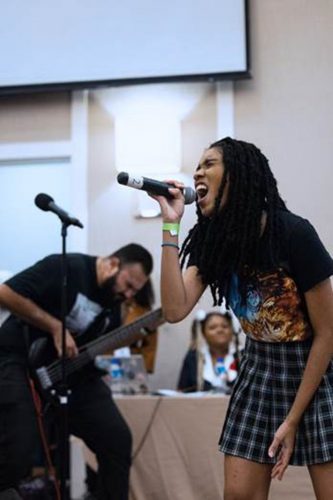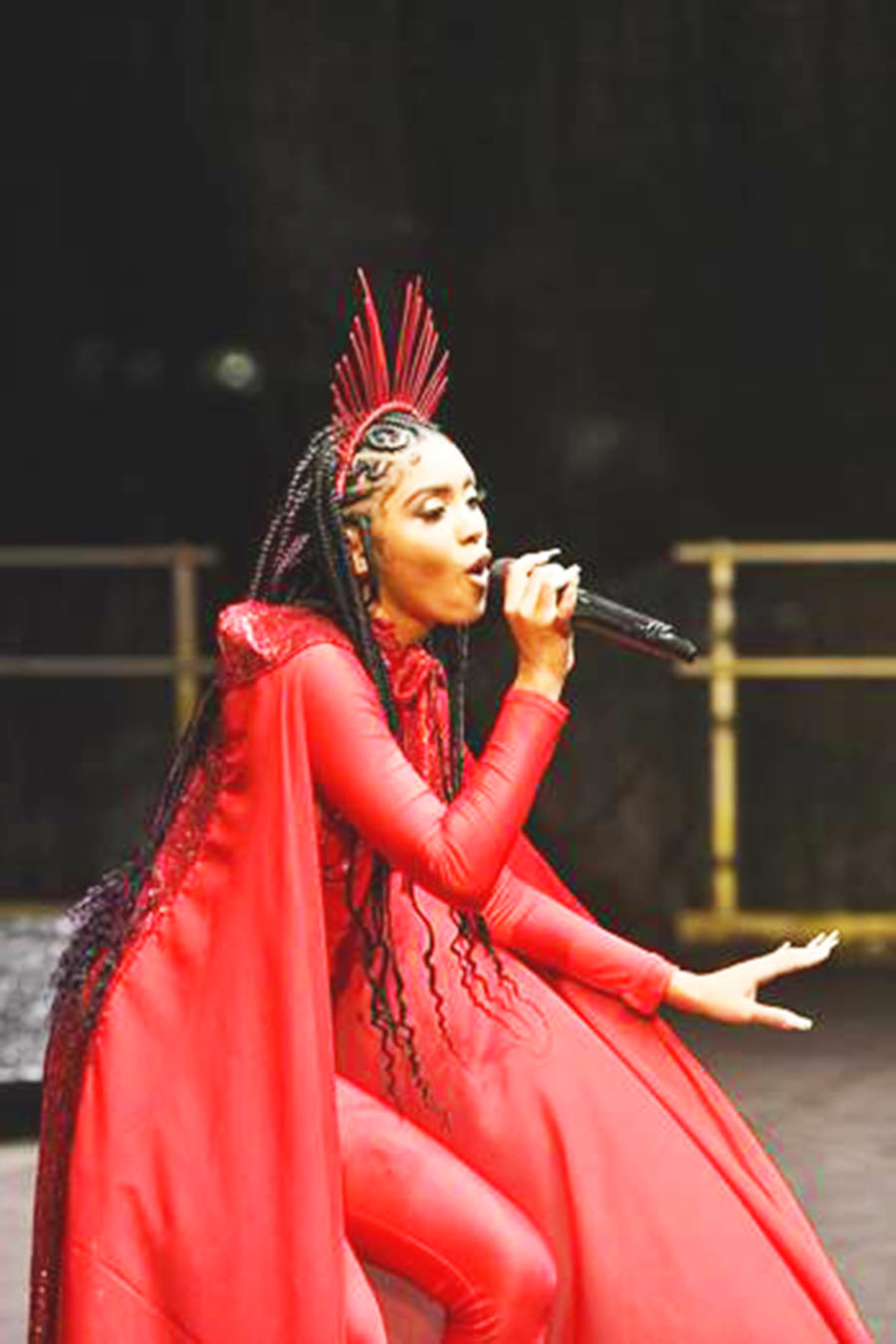Teija Edwards had harboured a dream of becoming an astro-nomer, driven by her fascination with the stars and the vastness of the universe. However, as she navigated the challenges of her science classes, she found it difficult to retain the material, prompting her to question whether astronomy was truly her life’s calling.
Engaging in a thoughtful contemplation, Edwards recognised a distinct skill set within herself—an innate ability to connect with people, something she genuinely enjoyed. While teaching briefly crossed her mind, she concluded that the profession demanded patience, a quality she admitted was not her strongest suit.
Upon further introspection, Edwards unearthed a passion for the arts. This newfound love led her to an unexpected avenue where she would shine: the world of performance. Edwards’s journey into public performance gained momentum at Fumacon, an event tailored for cosplay lovers. Embracing the stage for the first time as a host and performer, she was met with a positive reception from the crowd. The organisers offered simple advice: “Be yourself and engage the crowd.” This guidance marked the beginning of her artistic exploration and a promising future in the world of entertainment.

Edwards’s passion extends beyond mere entertainment; she is enamoured with the idea of showcasing her Guyanese and Caribbean culture through her artistic endeavours. “I take immense pride in being from this country and this region,” she expressed with joy, but pointed out that she does not believe Guyana’s cultural identity is strong enough. She said that some people who are insistent on the erasure of creole by people who insist that Guyanese must “speak properly” are an example of this. It is this deep connection to her cultural identity that fuelled her love for soca and she titled herself a “soca junkie” with a commitment whose love will last throughout her lifetime.
While she has love and appreciation for the artform, Edwards highlighted a concern—she perceived a lack of appreciation for soca music among Guyanese and aspired to alter this narrative. Her mission is to show that soca is not only party music but that which can have a rich narrative. Edwards believes that her music could serve as a catalyst for this change in perception.
Her love and dedication to soca and cultural representation in the artistic realm earned Edwards second place in the Junior Soca Monarch. She des-cribed this as a major achievement, but the journey leading up to her performance was not without its hurdles. She had rehearsed for two weeks prior to the competition and everything seemed to be progressing smoothly, she said. However, just two days before the competition, she had forgotten her lyrics. She recounted that friends and colleagues were incredulous, exclaiming, “Teija, what? What do you mean you forgot?” Concerned, they worried that her song, which they saw as a potential winner, was at risk. To compound the challenge, her initial set of dancers informed her that they would be unable to perform. She turned to her cousin for assistance, who helped her recruit two replacement dancers just in time to salvage her performance.
Her second proudest moment unfolded when she shared the stage with Kees Dieffenthaller, the energetic lead singer of the renowned Kes and the Band. On the day of the concert, “Stinging Nettles,” where Kes was set to perform at the Marriott Hotel, the University of Guyana had an interview scheduled with him. Edwards, an ardent fan, awaited his arrival, making the moment particularly special for her.
As the interview commenced, Edwards, being the first to stand up, introduced herself as an aspiring soca artist who had recently secured second place in the Junior Soca Monarch competition. Kes, impressed by her accomplishment, engaged in a conversation where she asked about his travels, workload and how he manages to maintain his energy and avoid burnout. Kes offered valuable advice, emphasising the importance of a strong support network, knowing when to take breaks, selecting shows wisely, and incorporating exercise into one’s routine.
Later, during the concert, Edwards aimed to be at the stage front, armed with her Guyanese flag that she carries to all concerts, hoping her favourite soca artists would wave and return it. That was her sole mission for the night, she said. As she danced to the song “Workout” featuring Nailah Blackman, Kes spotted her and exclaimed, “I need a Nailah for the night.” Recog-nising Edwards, he said, “You, I know you could sing.” Encouraged by her friends, she climbed onto the stage, and Kes introduced her to the crowd.
Despite the overwhelming excitement, when handed the mic, Edwards momentarily felt disoriented about where to start the song. Recalling the experience with joy, she said, “I don’t know which part of the song we starting from. I start from the chorus. We suppose to start from the verse but as soon as I ketch meself and realise. Oh! Is verse we singing, I switch right away.” The performance turned out to be entirely spontaneous, showcasing her ability to harmonise and match energy in soca performances, leaving many wondering if it was rehearsed.
The next morning, her mother burst into her room, exclaiming, “Why you didn’t tell me you were on stage and performed with Kes?” Edwards said she thought Kes might have forgotten about their encounter at the university and said, with a higher pitch, “He remembered me!”






